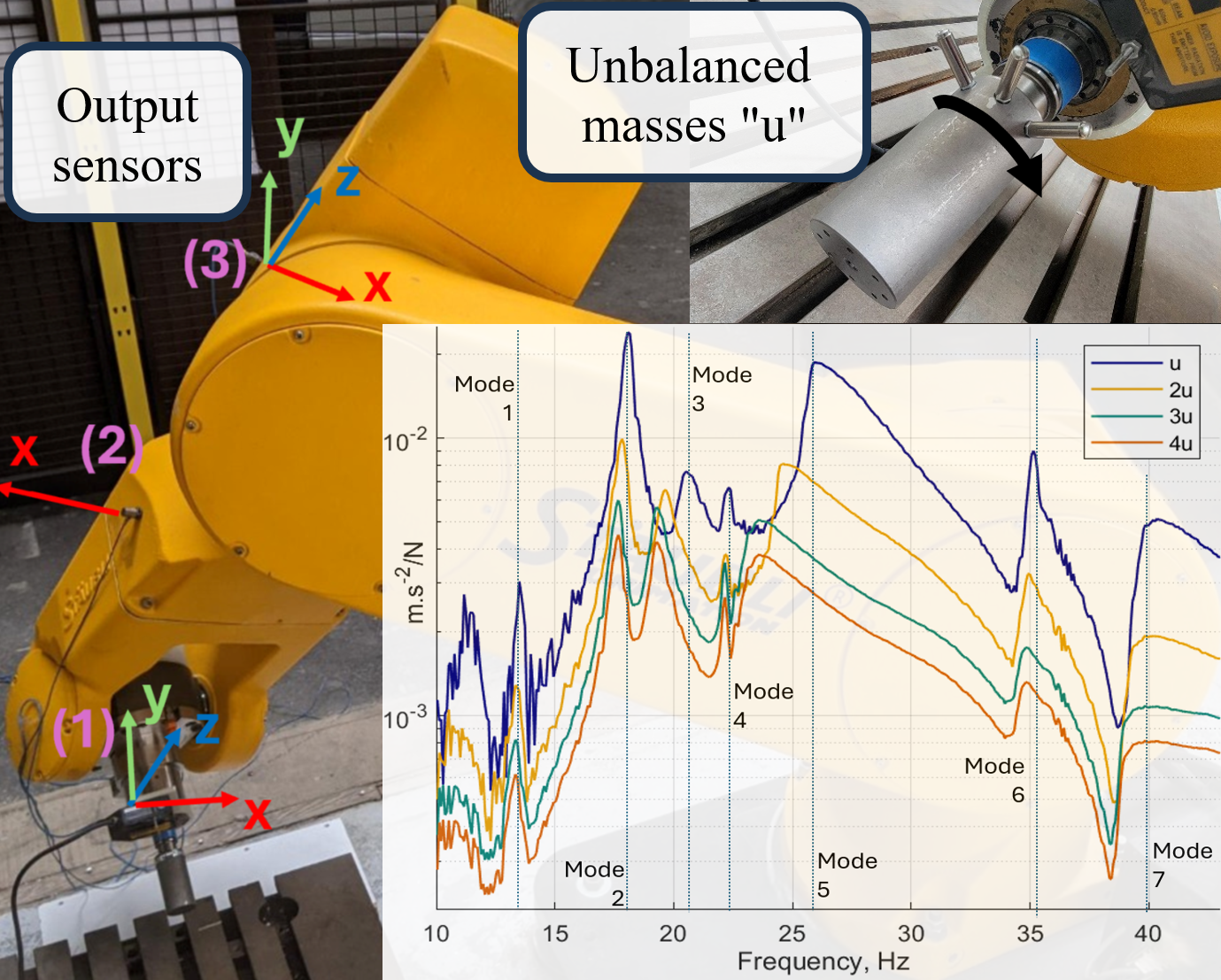How to perform modal analysis of milling robot using a spindle-driven unbalanced excitation ?


This project proposes an intermediate method:




Evolution of transfers with increasing mass.

We will come back to the principle of this method in a later post !



“This article presents a novel modal analysis method for investigating the dynamic behavior of milling robots. The proposed method utilizes inertial forces generated by an unbalanced tool rotating on the spindle to excite vibrations, and the frequency response function (FRF) is obtained through demodulation of the recorded vibrations. The study demonstrates the evolution of the robot’s FRF with varying levels of unbalance, showing that the modes exhibit softening behavior and increased damping as the unbalance increases. The method offers a balance between simplicity and precision, requiring less instrumentation than operational modal analysis (OMA) methods while allowing for controlled excitation levels. The importance of precise spindle rotation speed data is highlighted, suggesting the benefits of using spindles with encoders for better results. This method can be applied for characterization of robots in different poses, addressing non-linear behavior significant for the robot’s role in milling processes.”
